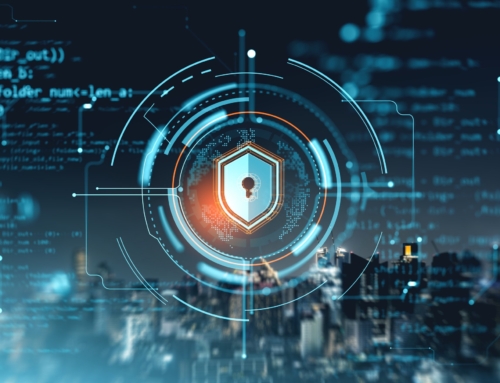A Step-by-Step Guide to Ransomware Remediation
Understanding Ransomware Threats
Ransomware remediation process begins with a clear understanding of the threats posed by this malevolent software. Ransomware can paralyze organizations by encrypting critical data and demanding payment for its release. The repercussions are not just financial but also include reputational damage, loss of customer trust, and the potential violation of compliance regulations. Our focus at Alvaka is to provide clients with a strategic approach to not only address but to proactively defend against these increasingly frequent cyber-attacks. Recognizing the escalating trend in ransomware incidents underscores our commitment to cultivating robust defense mechanisms and targeted response plans.
The Immediate Response to a Ransomware Attack
Once an attack is detected, the response clock starts. It’s crucial to act swiftly to mitigate further damage. At Alvaka, we prioritize the immediate isolation of affected systems to thwart the spread of the ransomware. We then proceed to assess the scope and impact of the attack with the view to rapidly restore services and maintain business continuity. The early stages of our ransomware remediation process are critical; the speed and accuracy of our response set the stage for comprehensive recovery and provide peace of mind for our clients knowing their systems were in experienced hands.
The Importance of Professional Assistance in Remediation
In the maze of ransomware remediation, specialized knowledge and experience are invaluable. For this reason, professional IT management and network services play an essential role in navigating the complex recovery landscape. Leveraging expertise not only streamlines the remediation process but ensures that all aspects of the system are thoroughly evaluated and fortified against future threats. At Alvaka, our approach is sculpted around best practices and innovative strategies, refined through our successful engagement in numerous remediation projects. It’s the synthesis of expertise and tailored service that enables our clients to rebound with minimal disruption.
Isolating the Infection to Prevent Spread
Identifying the Scope of Impact
As soon as we detect a ransomware intrusion within a network, our immediate priority is to determine the extent of the infection. By promptly identifying which systems have been compromised, we can start containing the damage swiftly. Our team conducts a thorough investigation to trace the source and pathways of the attack through advanced monitoring tools and incident response protocols. This critical step ensures that we pinpoint all affected areas quickly, thus enabling an effective isolation process.
Quarantining Infected Systems
Following the identification phase, the next action in our ransomware remediation process is to isolate infected devices from the rest of the network. It’s vital to quarantine these systems to halt the spread of the ransomware to unaffected devices. We achieve isolation through various methods, such as disconnecting from the internet, disabling wireless functionalities, and physically separating or turning off compromised hardware. Effectively sectioning off these areas is paramount for limiting the impact and protecting the integrity of the remaining network assets.
Securing Network Perimeters
In concert with system-level isolation, we reinforce network perimeters by strengthening firewall policies and access controls. This proactive measure prevents the ransomware from communicating with any control servers, thus neutralizing its capability to progress any further. As part of this process, we assess and update network defenses to seal any potential vulnerabilities that could be exploited for reinfection or additional attacks. Our team also reviews access logs and session histories to ensure that no unauthorized intrusions remain undetected within the network perimeter.
Mitigating the Threat of Lateral Movement
- Implementing Intrusion Prevention Systems (IPS)
- Scanning for Indicators of Compromise (IoCs)
- Applying security patches to vulnerable endpoints
- Enforcing strict credential controls and two-factor authentication
Lateral movement, the ability for a threat to move across a network, can pose a significant danger in the spread of ransomware. To address this, our specialists focus on deploying advanced Intrusion Prevention Systems (IPS) that monitor network traffic for unusual activities indicative of horizontal threat expansion. Concurrently, we scan all endpoints for Indicators of Compromise to ensure no stone is left unturned. This layered approach to security, enhanced by our team’s expertise in digital threat landscapes, aids in barricading the network environment against the spread of infection.
Collaboration with Stakeholders
Effective communication is indispensable in the midst of a ransomware remediation process. We actively collaborate with all stakeholders, from IT staff to executive leadership, ensuring that every party is informed and aligned on the response strategy. This collaborative approach ensures a unified front against the ransomware threat, fostering a resilient organizational stance as we work to expel the infection and restore normal operations.
Preparing for Recovery Efforts
Once we’ve successfully isolated the ransomware, we initiate preparations for the subsequent recovery phase. This involves creating backups of unaffected systems and securely storing them, providing a clean foundation for restoration. We are meticulous in our execution, cognizant that proper groundwork paves the way for a smooth recovery process. By securing data and systems that have not been compromised, we uphold the continuity and security of our client’s operations during the recovery phase.
Did you know? Effective ransomware remediation starts by isolating affected systems, which prevents the malware from spreading to other network-connected devices.
Ensuring a Comprehensive Ransomware Remediation Process
As we near the conclusion of our discussion on the ransomware remediation process, it’s crucial to recognize that an attack’s aftermath is just as critical as the initial response. At Alvaka, we understand that navigating the complexities of recovery can be daunting. However, with our expertise, the path to securing your systems and restoring operations is clear, structured, and pragmatic. The steps we have highlighted play a pivotal role in not just addressing the current breach, but in also fortifying defenses against future threats.
Closing the Chapter on Ransomware with Robust Recovery Measures
Following decisive isolation and eradication of the ransomware, we focus on recovery and resilience. Restoring systems and data from backups is a crucial step; it marks the beginning of normal business operations. As part of our ransomware recovery efforts, we meticulously ensure that every restored file is clean from infection to forestall the possibility of a dormant threat. It’s a process that’s taken with the highest degree of care to protect your assets and preserve your trust in our defensive strategies.
Reflection and Reinforcement after Ransomware Remediation
Post-recovery, we engage in a thorough analysis of the attack to understand its vectors and to strengthen your security posture. Implementing stronger access controls, updating security protocols, and conducting regular training for your staff are integral parts of bolstering your cyber defenses. We believe in reflecting on these incidents not just as a measure of recovery, but as a learning opportunity. Through this reflective practice, the ransomware remediation process extends to transformational growth for your cyber infrastructure.
Building a Sustainable Partnership for Cybersecurity Vigilance
At Alvaka, our relationship with our clients doesn’t end with the remediation process. We remain dedicated to providing ongoing support and monitoring to safeguard against future risks. Our proactive measures and vigilant monitoring systems serve as an enduring shield, offering peace of mind in an ever-evolving digital threat landscape. Together, we can ensure that your organization is always prepared and resilient against the tides of cyber threats. Your confidence in our capabilities fuels our commitment to excellence in IT management and network services.
To conclude, the ransomware remediation process is a comprehensive journey from immediate response to long-term recovery and defense reinforcement. It’s a cycle of constant vigilance and improvement, where each step is critical to the overall integrity of your business. At Alvaka, we embody this ethos in every solution we deliver, ensuring that your organization can not only withstand ransomware attacks but emerge stronger from them. Trust us to be your steadfast ally in cybersecurity, championing your resilience and success in the digital age.
FAQ
What is ransomware and why is it a significant threat to organizations? ▼
Ransomware is malicious software that encrypts files or systems, holding them hostage until a ransom is paid. It is a significant threat due to its impact on business operations, financial burden, and potential loss of sensitive data. Given its lucrative nature, ransomware attacks have been on the rise, posing a serious challenge to organizational cybersecurity.
What should be the immediate response when a ransomware attack is detected? ▼
Upon detection of a ransomware attack, the immediate response should include disconnecting affected systems from the network to contain the spread, identifying the scope of the attack, and initiating a communication strategy to inform stakeholders. Prompt action is essential to mitigate damages and mobilize the remediation process.
Why is it important to seek professional help during a ransomware remediation process? ▼
Professional IT assistance is crucial during ransomware remediation because experts possess the specialized knowledge and tools required to effectively combat the threat. Their expertise ensures that appropriate measures are implemented swiftly to restore operations, minimize losses, and prevent future attacks.
How do we isolate the infection in a ransomware attack? ▼
To isolate the infection, we immediately disconnect infected devices from the network, including Wi-Fi and Bluetooth connections. Additionally, we identify and isolate any systems that might be compromised to prevent further spread, ensuring a thorough containment of the threat.
What are the best practices for a ransomware remediation process? ▼
Best practices for ransomware remediation include promptly isolating affected systems, employing professional cybersecurity services, communicating transparently with stakeholders, restoring systems from clean backups, and conducting a post-incident analysis to bolster defenses. Consistently updating and practicing incident response plans is also recommended.
Should we pay the ransom demanded by cybercriminals? ▼
We generally advise against paying the ransom as it does not guarantee the recovery of encrypted files and further incentivizes attackers. Instead, focus on remediation efforts, engage with cybersecurity professionals, and if necessary, involve the authorities to address the situation.
How do we recover from a ransomware attack? ▼
Recovery involves restoring data from backups, rebuilding compromised systems, and thoroughly scanning for any remnants of the ransomware. Implementing robust cybersecurity measures and updating policies to prevent recurrences are also integral steps in the recovery process.
What are the consequences of a ransomware attack? ▼
The consequences can include operational downtime, financial losses, damage to an organization’s reputation, potential legal liabilities, and the loss of critical data. Acting swiftly with an effective remediation plan can mitigate these outcomes significantly.
Can ransomware affect cloud-based systems? ▼
Yes, ransomware can affect cloud-based systems if they are not properly secured. It’s essential to employ robust cloud security practices, such as multi-factor authentication and regular backups, to protect against ransomware threats in the cloud environment.
How can we prepare our organization to prevent future ransomware attacks? ▼
Preparing to prevent future attacks involves regularly updating software and systems, conducting frequent backups, training employees on cybersecurity awareness, executing drills, and having a clear ransomware response strategy in place. Additionally, partnering with cybersecurity experts for proactive defense measures is always a prudent move.








 Smoke testing is a term used to describe the testing process for servers after patches are applied.
Smoke testing is a term used to describe the testing process for servers after patches are applied.  This is a basic cost calculator for you to compute your typical monthly cost for patching your servers, PCs, laptops, tablets and associated application software. It also forms the basis for you to begin calculating your Return on Investment for software patching, or for comparison with alternatives to the manual process of patching operating systems and application software—such as Patch Management as a Service, also known as Vulnerability Management as a Service.
This is a basic cost calculator for you to compute your typical monthly cost for patching your servers, PCs, laptops, tablets and associated application software. It also forms the basis for you to begin calculating your Return on Investment for software patching, or for comparison with alternatives to the manual process of patching operating systems and application software—such as Patch Management as a Service, also known as Vulnerability Management as a Service.